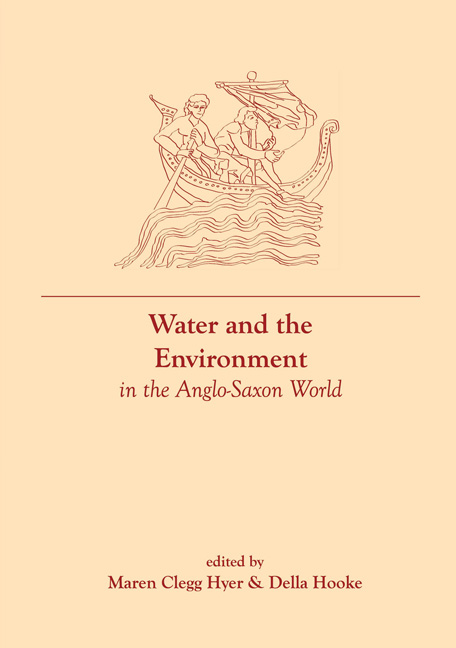Book contents
- Frontmatter
- Dedication
- Contents
- List of Illustrations
- List of Tables
- List of Contributors
- Introduction
- 1 From Whale's Road to Water under the Earth: Water in Anglo-Saxon Poetry
- 2 Water in the Landscape: Charters, Laws and Place Names
- 3 Fens and Frontiers
- 4 Marshlands and Other Wetlands
- 5 Rivers, Wells and Springs in Anglo-Saxon England: Water in Sacred and Mystical Contexts
- 6 Food from the Water: Fishing
- 7 Inland Waterways and Coastal Transport: Landing Places, Canals and Bridges
- 8 Watermills and Waterwheels
- 9 Water, Wics and Burhs
- Notes
- Suggested Reading
- Index
4 - Marshlands and Other Wetlands
- Frontmatter
- Dedication
- Contents
- List of Illustrations
- List of Tables
- List of Contributors
- Introduction
- 1 From Whale's Road to Water under the Earth: Water in Anglo-Saxon Poetry
- 2 Water in the Landscape: Charters, Laws and Place Names
- 3 Fens and Frontiers
- 4 Marshlands and Other Wetlands
- 5 Rivers, Wells and Springs in Anglo-Saxon England: Water in Sacred and Mystical Contexts
- 6 Food from the Water: Fishing
- 7 Inland Waterways and Coastal Transport: Landing Places, Canals and Bridges
- 8 Watermills and Waterwheels
- 9 Water, Wics and Burhs
- Notes
- Suggested Reading
- Index
Summary
a most dismal fen of immense size … now consisting of marshes, now of bogs, sometimes of black waters overhung by fog, sometimes studded with wooded islands, and traversed by the windings of tortuous streams.
This famous quote from Felix's Life of Saint Guthlac presents one perception of wetlands in the early medieval period. Such early medieval documents are few in number and were written with a specific purpose in mind: while useful, they are not objective records of the past, and so this chapter considers how early medieval communities exploited the range of wetland environments that existed around England's coast and estuaries using a far wider range of evidence. It outlines how the drainage systems and canals of Roman Britain fell into disrepair, and how, as sea levels rose, coastal wetlands once again became saltmarsh environments. These landscapes were, however, rich in natural resources that were widely exploited, and, around the eighth century, the growing intensity of wetland use is reflected in the digging of drainage systems, changing the relationship between people and their environment. Around the tenth century, this process culminated in the reclamation of some, but not all, wetlands, a transformation of the landscape that would have profoundly affected the daily lives of the communities living there as new patterns of land use – and therefore annual cycles of living and working – were introduced. Those areas that remained as intertidal marshes were still economically important and were used for salt production and as grazing land.
Coastal wetlands: a mosaic of environments
Wetlands once formed an important and widespread type of environment covering around 11.5 per cent of the English landscape, with 210,000 hectares (ha) of lowland peatland and 740,000 ha of alluvial wetlands in coastal areas, mostly around the mouths of major coastal estuaries, and 550,000 ha of floodplains in river valleys.2 Before human communities started to modify these coastal wetlands, they comprised a mosaic of natural environments, with unvegetated mudflats in the lower parts of the intertidal zone that would have been flooded by the sea twice a day, making this an unusual landscape for early medieval people to comprehend (Figure 4.1).
- Type
- Chapter
- Information
- Water and the Environment in the Anglo-Saxon World , pp. 89 - 106Publisher: Liverpool University PressPrint publication year: 2017



